Unlock Amazing Financial Freedom: Your Ultimate Guide to Dividend Investing for Beginners 💰
Welcome to the world of investing! If you’re looking for a powerful yet accessible way to grow your money and create a stream of passive income, then dividend investing for beginners might be the perfect strategy for you. It’s a method favored by many successful investors, not just for its financial rewards, but also for the peace of mind it can offer. This comprehensive guide will walk you through everything you need to know to start your journey toward building wealth with passive income stocks.
Many people dream of financial independence, where their money works for them, not the other way around. Dividend investing can be a significant step in that direction. Imagine receiving regular payments directly into your account, simply for owning a piece of a company. That’s the core appeal of dividends, and it’s more achievable than you might think, even if you’re just starting out.
This article will demystify dividend investing, explain its incredible benefits, show you how to find promising dividend-paying companies, and guide you in building your very first dividend portfolio. We’ll also touch upon potential pitfalls and how a long-term mindset is crucial for success. Let’s embark on this exciting journey to financial empowerment!
Table of Contents
- 📈 Understanding the Magic: What Exactly is Dividend Investing?
- 🌟 The Incredible Perks: Why Choose Dividend Stocks?
- 🚀 Getting Off the Ground: Your First Steps into Dividend Investing
- 🔍 Finding Your Gems: How to Research Dividend Companies
- 🏦 Constructing Your Fortress: Building a Solid Dividend Portfolio
- 🚧 Navigating with Care: Common Mistakes to Sidestep
- 🧘♀️ The Power of Patience: Embracing the Long-Term Vision
- 💡 Real-World Scenarios: How Dividend Investing Works for Different People
- 🎉 Your Journey to Financial Empowerment Starts Now!
📈 Understanding the Magic: What Exactly is Dividend Investing?
At its heart, dividend investing for beginners revolves around buying shares in companies that distribute a portion of their profits back to their shareholders. These payments are known as dividends. Think of it like earning rent from a property you own; in this case, the “property” is your share in a company, and the “rent” is the dividend.
What Are Dividends, Really?
When a company makes a profit, it has a few choices for what to do with that money. It can reinvest it back into the business for growth (like research and development, expanding operations, or acquiring other companies), pay off debt, or it can return some of it to its shareholders. This return to shareholders is the dividend. Dividends are typically paid in cash, usually on a quarterly basis for U.S. companies, though some may pay monthly or annually.
For instance, if you own 100 shares of “Company X,” and it declares a dividend of $0.50 per share, you would receive $50 (100 shares x $0.50/share) in your investment account. It’s a direct reward for being a part-owner of the company.
Why Do Companies Share Their Profits?
Companies choose to pay dividends for several reasons. Mature, established companies that generate consistent profits but may have slower growth prospects often use dividends to attract and retain investors. Paying a dividend can be a sign of a company’s financial health and stability. It signals to the market that the management is confident in the company’s ongoing profitability and cash flow.
Historically, many blue-chip companies have a long track record of paying and even consistently increasing their dividends. This makes them attractive to investors seeking a reliable income stream. In today’s market, even some technology giants like Microsoft and Apple, once known solely for growth, have become significant dividend payers as their businesses have matured and generate massive cash flows. This trend highlights an evolving corporate landscape where returning value to shareholders through dividends is increasingly recognized.
A Few Key Terms to Know:
- Dividend Yield: This is a crucial metric for dividend investors. It’s the annual dividend per share divided by the stock’s current market price, expressed as a percentage. For example, if a stock trading at $100 per share pays an annual dividend of $3, its dividend yield is 3% ($3 / $100). It helps you compare the income potential of different dividend stocks.
- Payout Ratio: This indicates the proportion of a company’s earnings that is paid out as dividends. A very high payout ratio (e.g., over 80-90%) might suggest that the dividend could be at risk if earnings decline, as there’s little cushion. A lower, sustainable payout ratio is generally preferred.
- Ex-Dividend Date: This is the cutoff date for dividend eligibility. You must own the stock before the ex-dividend date to receive the upcoming dividend payment. If you buy on or after this date, the seller gets the dividend.
Understanding these basic concepts is the first step in confidently navigating the world of passive income stocks and building wealth through dividends.
🌟 The Incredible Perks: Why Choose Dividend Stocks?
Dividend investing offers a compelling array of advantages, especially for those new to the stock market or seeking a more conservative approach to wealth creation. These benefits go beyond just receiving a check; they can contribute to a more stable and emotionally comfortable investment experience.
A Reliable Stream of Income
The most direct benefit is, of course, the regular income. Whether you’re saving for retirement, supplementing your current earnings, or simply want your investments to generate cash flow, dividends provide a tangible return. This income can be reinvested to buy more shares (supercharging your growth, which we’ll discuss next) or used to cover living expenses. The predictability of dividend income from stable companies can be a comforting factor, especially in volatile market conditions. Unlike capital gains, which rely on selling a stock at a higher price, dividends are paid out from company profits regardless of day-to-day stock price fluctuations, as long as the company maintains its dividend policy.
The Magic of Compounding: Your Wealth Snowball
Albert Einstein reportedly called compound interest the eighth wonder of the world. Dividend investing allows you to harness this power magnificently. When you reinvest your dividends to buy more shares of the same stock (often through a Dividend Reinvestment Plan or DRIP), those new shares also start earning dividends. Over time, this creates a snowball effect, where your investment and your income stream can grow exponentially. This is a cornerstone of long-term building wealth. Even small, consistent dividend payments, when reinvested, can make a huge difference over decades.
Potential for Lower Volatility and Emotional Well-being
Dividend-paying stocks, particularly those from established, financially sound companies, can often be less volatile than non-dividend-paying growth stocks. This is because a portion of their total return comes from the dividend itself, providing a cushion during market downturns. When the market is shaky, knowing that you’re still receiving regular income can provide significant emotional comfort. This “comfort blanket” can help investors stay the course and avoid making impulsive decisions based on fear, which is often the biggest detriment to long-term investment success. The psychological benefit of seeing consistent income, even when stock prices are fluctuating, cannot be overstated for many investors, especially beginners.
A Hedge Against Inflation’s Bite
Inflation erodes the purchasing power of your money over time. Dividend investing can offer a degree of protection against this. Many strong companies have a history of increasing their dividends annually, often at a rate that outpaces inflation. This means that your income stream not only remains steady but can actually grow in real terms, helping you maintain your standard of living. This characteristic makes passive income stocks particularly attractive for long-term financial planning.
A Sign of Company Strength and Discipline
Companies that consistently pay and grow their dividends are often well-managed, financially disciplined, and operate in stable industries. A commitment to paying dividends requires prudent capital management and a focus on sustainable profitability. While not a guarantee, a solid dividend track record can be an indicator of a quality business, which is always a good starting point for any investment.
These benefits combine to make dividend investing a robust strategy for anyone looking to build a resilient and income-generating portfolio. It’s a method that rewards patience and a long-term perspective, aligning well with the goals of most beginner investors.
🚀 Getting Off the Ground: Your First Steps into Dividend Investing
Embarking on your dividend investing journey is exciting! Like any new venture, a little preparation and a clear understanding of the initial steps can make the process smoother and more rewarding. Here’s how you can get started on the path to building wealth with passive income stocks.
1. Define Your Financial Aspirations 🎯
Before you buy your first stock, take some time to think about what you want to achieve. Are you investing for long-term growth, hoping to build a significant nest egg for retirement? Are you seeking to generate a supplemental income stream to cover current expenses or fund specific goals like travel or education? Or perhaps a combination of both?
Knowing your objectives will help you tailor your dividend investing strategy. For example, a younger investor with a long time horizon might focus more on companies with lower current yields but strong dividend growth potential, emphasizing reinvestment. Someone closer to retirement might prioritize companies with higher, stable current yields. Clearly defined goals provide a roadmap for your investment decisions and help you stay focused.
2. Educate Yourself Continuously 📚
The world of investing is dynamic. While this guide aims to provide a solid foundation for dividend investing for beginners, the learning process should be ongoing. Read books, follow reputable financial news sources, and consider exploring online courses or webinars. The more you understand about investing principles, market dynamics, and company analysis, the more confident you’ll become.
Don’t feel pressured to become an expert overnight. Start with the basics and gradually expand your knowledge. Understanding concepts like risk tolerance, asset allocation, and market cycles will be invaluable as you build and manage your dividend portfolio.
3. Open an Investment Account 💻
To buy dividend stocks, you’ll need a brokerage account. There are many online brokers to choose from, offering various features, commission structures, and research tools. For beginners, look for brokers with:
- Low or no commission fees: This is increasingly common and helps maximize your returns.
- User-friendly platform: An intuitive interface makes it easier to navigate and place trades.
- Educational resources: Many brokers offer articles, videos, and tutorials for new investors.
- Access to research tools: Features like stock screeners and analyst reports can be helpful.
- Fractional shares: Some brokers allow you to buy a portion of a share, which is great if you’re starting with a smaller amount of money and want to invest in higher-priced stocks.
Popular options include Fidelity, Charles Schwab, Vanguard, and app-based brokers like Robinhood or Webull. Do some research to find one that best suits your needs.
4. Start Small and Be Consistent 💧➡️🌊
You don’t need a fortune to start dividend investing. Many successful investors began with modest amounts. The key is to start, even if it’s with a small sum, and to invest regularly. Consider setting up automatic transfers to your brokerage account and making consistent investments over time, a strategy known as dollar-cost averaging. This approach can help reduce the risk of investing a large sum at the wrong time and builds a disciplined investment habit.
Remember, building wealth through dividend investing is a marathon, not a sprint. Consistency and patience are your greatest allies.
🔍 Finding Your Gems: How to Research Dividend Companies
Once you’re set up and ready to invest, the next exciting step is identifying promising dividend-paying companies. This research phase is crucial for making informed decisions and selecting stocks that align with your dividend investing for beginners strategy. While professional investors have access to sophisticated tools, there are many ways for beginners to find and evaluate potential passive income stocks.
Using Stock Screeners: Your First Filter 🔎
Stock screeners are online tools that allow you to filter thousands of publicly traded companies based on specific criteria. This is an excellent way to narrow down the universe of stocks to a manageable list of potential candidates. Many brokerage platforms offer built-in screeners, and there are also free or low-cost standalone screeners available online, such as those on Yahoo Finance or Finviz.
When screening for dividend stocks, you might look for criteria like:
- Dividend Yield: You can set a minimum yield, e.g., companies yielding above 2% or 3%. Be cautious of exceptionally high yields, as they can sometimes signal higher risk (a “yield trap”).
- Payout Ratio: Look for companies with sustainable payout ratios (e.g., below 60-70%, though this varies by industry – Real Estate Investment Trusts, or REITs, for example, are structured to pay out most of their income).
- Dividend Growth History: Some screeners allow you to find companies that have consistently increased their dividends for a certain number of years (e.g., 5, 10, or even 25+ years, often called Dividend Aristocrats or Dividend Kings).
- Market Capitalization: You might prefer larger, more established companies (large-cap) or be open to smaller companies with growth potential.
- Sector/Industry: You might want to diversify across different sectors.
A screen is just a starting point. It helps you find potential candidates, but further research is essential.
Digging Deeper: What to Look For 🧐
After you have a list of potential companies from your screen, it’s time to do some homework on each one. Here are key areas to investigate:
-
Understand the Business:
- What does the company do? How does it make money?
- Is it in a growing, stable, or declining industry?
- What is its competitive position? Does it have a strong brand, unique products, or a significant market share (often referred to as an “economic moat”)?
-
Financial Health and Profitability:
- Look at the company’s revenue and earnings growth over the past several years. Is it consistent?
- Check its balance sheet. Does it have a manageable level of debt? A company with too much debt might struggle to maintain its dividend if business slows down. Key ratios here are the debt-to-equity ratio or interest coverage ratio.
- Examine its cash flow. A company needs strong and reliable free cash flow (cash left over after operating and capital expenses) to sustainably pay dividends.
-
Dividend Sustainability and History:
- How long has the company been paying dividends? A long history is often a good sign.
- Has it consistently increased its dividends over time? This is a hallmark of strong dividend growth stocks.
- Is the current dividend well-covered by earnings (check the payout ratio) and free cash flow?
- Read management’s commentary on their dividend policy in annual reports or earnings call transcripts (often available on the company’s investor relations website). Do they express a strong commitment to the dividend?
-
Valuation: Is the Price Right? ⚖️
- Even a great company can be a poor investment if you overpay for its stock. Look at valuation metrics like the Price-to-Earnings (P/E) ratio and compare it to its historical average and its peers in the same industry. A significantly lower P/E than its peers might indicate an undervalued opportunity, or it could signal underlying problems – this requires further investigation.
- Consider the dividend yield in relation to its historical range and peers.
-
Future Growth Prospects and Industry Trends:
- What are the company’s plans for future growth?
- Are there any industry trends or macroeconomic factors (like rising interest rates or technological disruptions) that could positively or negatively impact the company? For example, the rise of renewable energy could impact traditional energy companies, while an aging population might benefit healthcare companies.
Where to Find Information:
- Company Investor Relations Websites: These are goldmines of information, containing annual reports (10-K filings), quarterly reports (10-Q filings), investor presentations, and earnings call transcripts.
- Financial News Websites: Reputable sites like The Wall Street Journal, Bloomberg, Reuters, Yahoo Finance, and Google Finance provide stock quotes, charts, news, and basic financial data.
- Brokerage Research: Many brokers provide analyst reports and ratings.
- Independent Research Sites: Services like Morningstar offer in-depth analysis (some free, some paid).
Researching companies takes time and effort, but it’s a vital skill for successful building wealth through passive income stocks. Start with one or two metrics and gradually expand your understanding. The goal is to build conviction in the companies you choose to invest in.
🏦 Constructing Your Fortress: Building a Solid Dividend Portfolio
Once you’ve identified some promising dividend-paying companies, the next step is to actually build your portfolio. This isn’t just about picking good stocks; it’s also about how you combine them to manage risk and optimize for your long-term goals. Here’s how beginners can approach structuring their initial dividend portfolio for building wealth.
Diversification: The Golden Rule of Investing 🧺
You’ve probably heard the saying, “Don’t put all your eggs in one basket.” This is the essence of diversification, and it’s a cornerstone of sound investing, especially in dividend investing for beginners. Diversification means spreading your investments across different companies, industries, and sometimes even asset classes or geographic regions.
Why is it so important? If you invest all your money in a single company or industry, and that company or industry performs poorly, your entire portfolio could suffer significantly. By diversifying, you reduce the impact that any single investment’s poor performance can have on your overall returns. If one stock in your diversified portfolio cuts its dividend or sees its price fall, the impact is cushioned by your other holdings.
For dividend investors, this might mean holding stocks in various sectors like:
- Consumer Staples (e.g., companies selling food, beverages, household products)
- Utilities (e.g., electricity, gas, water providers)
- Healthcare (e.g., pharmaceutical companies, medical device manufacturers)
- Financials (e.g., banks, insurance companies)
- Industrials (e.g., manufacturing, construction)
- Technology (increasingly, many mature tech companies pay dividends)
- Real Estate (through Real Estate Investment Trusts – REITs)
Aim for a mix that isn’t overly concentrated in any one area.
How Many Stocks Should You Own? 🤔
There’s no magic number for how many stocks should be in a beginner’s dividend portfolio. Owning too few (e.g., 1-5) leaves you undiversified and exposed to significant single-stock risk. Owning too many (e.g., 50-100+) can become difficult to manage and research effectively, and the benefits of diversification diminish beyond a certain point.
Many experts suggest that a portfolio of 20-30 well-researched stocks can provide adequate diversification for individual investors. For a beginner, starting with a smaller number, perhaps 5-10 stocks spread across different sectors, and gradually adding more as you gain experience and capital, can be a sensible approach. The key is to only invest in companies you understand and have researched.
The Power of Reinvesting Dividends (DRIPs) 💧🌱
One of the most powerful tools for building wealth with passive income stocks is reinvesting your dividends. Many companies and most brokers offer Dividend Reinvestment Plans (DRIPs). With a DRIP, the cash dividends you receive are automatically used to purchase more shares (or fractional shares) of the same stock, usually commission-free.
This automates the compounding process we talked about earlier. Each reinvested dividend buys more stock, which then earns more dividends, which buys even more stock, and so on. Over the long term, this can significantly boost your total returns. For beginners, setting up DRIPs is a highly recommended strategy, as it puts your dividend income to work immediately and accelerates your wealth-building journey.
Position Sizing: How Much to Invest in Each Stock? ⚖️
Position sizing refers to how much of your total portfolio you allocate to each individual stock. It’s generally advisable to avoid having too large a percentage of your portfolio in any single stock, even if you’re very confident in it. A common guideline is to keep any single position to no more than 5-10% of your total portfolio value.
For example, if you have $10,000 to invest, you might decide to invest $500 (5%) in each of 20 different stocks, or $1,000 (10%) in each of 10 stocks. As your portfolio grows, you’ll need to monitor and potentially adjust these position sizes to maintain your desired level of diversification.
Building a dividend portfolio is an ongoing process. You’ll learn, adapt, and refine your approach over time. The key is to start with a solid foundation of diversification and a commitment to reinvesting those valuable dividends.
🚧 Navigating with Care: Common Mistakes to Sidestep
While dividend investing for beginners can be a fantastic strategy for building wealth, like all investment approaches, it’s not without its potential pitfalls. Being aware of these common mistakes can help you navigate more safely and make smarter decisions with your passive income stocks.
1. The Siren Song of Super-High Yields (Yield Traps) 🎣
It can be tempting to gravitate towards stocks offering exceptionally high dividend yields (e.g., 10% or more). While a high yield can sometimes be a sign of an undervalued company, it can also be a red flag – a “yield trap.” An unusually high yield might indicate that the stock price has fallen significantly due to underlying problems with the company, and the market may be anticipating a dividend cut.
If a company’s earnings are declining or it’s facing serious business challenges, it may not be able to sustain its high dividend payments. Always investigate why a yield is so high. Focus on the sustainability of the dividend, supported by strong company fundamentals and a reasonable payout ratio, rather than just chasing the highest number.
2. Forgetting About Dividend Cuts and Suspensions ✂️
Dividends are not guaranteed. Companies can, and sometimes do, cut or suspend their dividend payments, especially during economic downturns or if the business runs into trouble. While a well-diversified portfolio can help mitigate the impact of a single dividend cut, it’s important to be mentally prepared for this possibility.
Regularly monitor the financial health of the companies in your portfolio. If you see signs of deteriorating fundamentals or concerning language from management about their commitment to the dividend, it might be a signal to reassess your investment. Sometimes, selling a stock before an anticipated cut, or shortly after, is the prudent move, even if it means realizing a loss.
3. Ignoring the Importance of Company Fundamentals 📉
The dividend is only one piece of the puzzle. A strong dividend payment must be backed by a strong, healthy company. Don’t invest in a company solely because it pays a good dividend. Ensure the company has solid earnings, manageable debt, a good competitive position, and positive future prospects.
A company with weak fundamentals may eventually have to cut its dividend or could see its stock price decline significantly, wiping out any income you’ve received. Always prioritize quality companies that can sustainably generate the cash flow needed to support and grow their dividends over time.
4. The Perils of Emotional Investing 🎢
Fear and greed are powerful emotions that can derail even the most well-thought-out investment plans. When the market is soaring, it’s easy to get caught up in the excitement and perhaps take on too much risk. When the market is falling, fear can lead to panic selling at the worst possible time, locking in losses.
Dividend investing, with its focus on regular income, can help provide an emotional anchor. However, it’s still crucial to maintain discipline. Stick to your investment plan, focus on the long-term, and try to avoid making decisions based on short-term market noise or your emotional state. As we’ve emphasized, the consistency of dividend income can provide comfort, helping you stay invested through thick and thin.
5. Lack of Diversification or Over-Concentration 🎯
We’ve discussed diversification, but it’s worth reiterating. Concentrating too much of your capital in a few stocks or a single sector exposes you to unnecessary risk. If that sector faces headwinds or one of your large holdings falters, your portfolio could take a major hit. Aim for a balanced portfolio spread across different types of dividend-paying companies.
By being mindful of these potential mistakes, you can approach dividend investing for beginners with greater confidence and increase your chances of long-term success in building wealth.
🧘♀️ The Power of Patience: Embracing the Long-Term Vision
In the fast-paced world we live in, patience can often feel like a forgotten virtue. However, when it comes to dividend investing for beginners and successfully building wealth, patience is not just a virtue – it’s a superpower. The most significant rewards from investing in passive income stocks often accrue to those who can adopt a long-term perspective and stay the course.
Investing is a Marathon, Not a Sprint 🏃♀️💨
It’s natural to want to see quick results from your investments. However, true wealth building, especially through a strategy like dividend investing, is a gradual process. The magic of compounding dividends, where your earnings start generating their own earnings, takes time to unfold. Trying to get rich quick in the stock market often leads to excessive risk-taking and disappointing outcomes.
Instead, view your dividend portfolio as a garden. You plant the seeds (your initial investments), nurture them (reinvest dividends, add new capital regularly), and over time, you’ll see them grow into something substantial. There will be different seasons – periods of rapid growth, slower periods, and perhaps even some storms (market downturns). Patience helps you tend your garden through all of them.
Riding Out the Market’s Waves 🌊
The stock market is inherently volatile in the short term. Prices go up, and prices go down. There will be bull markets (periods of rising prices) and bear markets (periods of falling prices). It’s crucial for beginners to understand that these fluctuations are normal.
One of the great advantages of dividend investing is that even when stock prices are falling, quality dividend-paying companies often continue to pay their dividends. This consistent income stream can provide a psychological buffer during market downturns, making it easier to resist the urge to panic sell. Selling during a market crash often means locking in losses and missing out on the eventual recovery. History has shown that markets tend to recover and reach new highs over the long term. Patience allows you to ride out these waves.
The Cost of Impatience: Missing the Best Days ☀️
Research has consistently shown that a significant portion of the stock market’s long-term gains comes from a surprisingly small number of its best-performing days. If you try to time the market by jumping in and out, you risk missing these crucial days, which can severely impact your overall returns.
Staying invested through thick and thin, especially with a portfolio of quality dividend stocks, generally leads to better long-term outcomes than attempting to predict market movements. Patience keeps you in the game, allowing you to capture those important upswings.
Focus on What You Can Control 🧘♂️
You can’t control what the stock market will do tomorrow, next week, or next year. You can’t control economic events or geopolitical shifts. However, you can control:
- Your investment strategy (e.g., focusing on quality dividend stocks)
- Your savings rate and how consistently you invest
- Your research process and the quality of companies you choose
- Your decision to reinvest dividends
- Your emotional reactions to market volatility
By focusing on these controllable factors and maintaining a patient, long-term outlook, you set yourself up for success in building wealth through dividend investing. It’s about the journey and the consistent application of sound principles, not chasing short-term thrills.
💡 Real-World Scenarios: How Dividend Investing Works for Different People
The beauty of dividend investing for beginners is its versatility. It can be adapted to suit the needs and goals of various individuals at different stages of life. Let’s explore a couple of generalized scenarios to see how investing in passive income stocks can help in building wealth and achieving financial objectives.
Scenario 1: Sarah, The Young Professional Building for the Future 👩💻
Sarah is in her late 20s and has just started her career. Retirement seems a long way off, but she’s keen to start building wealth early. She doesn’t need immediate income from her investments, so her primary goal is long-term growth.
How Dividend Investing Helps Sarah:
- Focus on Dividend Growth Stocks: Sarah decides to invest in companies that have a strong history of consistently increasing their dividends, even if their current yield isn’t the highest. These are often companies with good growth prospects that are reinvesting a portion of their earnings back into the business while also rewarding shareholders.
- Power of Reinvestment (DRIPs): Sarah diligently reinvests all her dividends. Over the next 30-40 years, this compounding effect will dramatically accelerate the growth of her portfolio. Those small, reinvested dividends will buy more shares, which will earn more dividends, creating a powerful wealth-building engine.
- Dollar-Cost Averaging: Sarah invests a fixed amount of money each month, regardless of market conditions. This disciplined approach helps her buy more shares when prices are low and fewer when prices are high, averaging out her purchase cost over time.
- Long-Term Perspective: Being young, Sarah can afford to ride out market volatility. She understands that short-term downturns are opportunities rather than reasons to panic, especially since her focus is on the growth of her portfolio decades from now.
For Sarah, dividend investing is a patient strategy to accumulate significant wealth over her working life, setting her up for a comfortable retirement.
Scenario 2: David, The Retiree Seeking Stable Income 👨🦳
David is 65 and has recently retired. He has a decent nest egg saved up and now needs his investments to generate a reliable income stream to cover his living expenses, supplementing his pension and social security.
How Dividend Investing Helps David:
- Focus on Stable, Higher-Yielding Stocks: David’s priority is current income. He looks for established companies with a history of paying consistent, reliable dividends and often seeks out those with a higher current dividend yield, provided the dividend is sustainable. This might include blue-chip stocks, utilities, or REITs.
- Regular Income Payments: The quarterly (or sometimes monthly) dividend payments provide David with a predictable cash flow that he can use for his daily expenses, travel, or healthcare costs. This replaces the regular paycheck he used to receive.
- Potential for Income Growth: While his primary focus is current income, David also appreciates companies that have a history of modestly increasing their dividends. This helps his income keep pace with inflation, maintaining his purchasing power over his retirement years.
- Capital Preservation with Moderate Growth: While income is key, David also wants to preserve his capital and ideally see some growth to ensure his portfolio lasts throughout his retirement. A balanced portfolio of quality dividend stocks can offer both.
- Emotional Comfort: Knowing that a steady stream of dividend income is arriving regularly gives David peace of mind, allowing him to enjoy his retirement without constantly worrying about stock market fluctuations or having to sell shares to generate cash, especially during market downturns.
For David, dividend investing provides the financial security and predictable income he needs to live comfortably in retirement.
These scenarios illustrate that dividend investing for beginners isn’t a one-size-fits-all approach. By understanding your own financial goals and life stage, you can tailor this powerful strategy to help you achieve your unique vision of building wealth and financial well-being through passive income stocks.
🎉 Your Journey to Financial Empowerment Starts Now!
You’ve now journeyed through the essentials of dividend investing for beginners, from understanding what dividends are to learning how to build and manage your own portfolio of passive income stocks. We’ve explored the incredible benefits, the practical steps to get started, and the importance of a patient, long-term mindset for building wealth.
Remember, dividend investing is more than just a financial strategy; it’s a pathway to greater financial freedom and peace of mind. The regular income from dividends can provide a sense of security and stability, allowing you to navigate life’s uncertainties with more confidence. The power of compounding, diligently applied over time, can transform modest savings into a substantial nest egg.
The key takeaways for your journey are:
- Start with knowledge: Understand the fundamentals before you dive in.
- Define your goals: Know what you want to achieve.
- Research diligently: Choose quality companies with sustainable dividends.
- Diversify your holdings: Don’t put all your financial eggs in one basket.
- Reinvest your dividends: Let compounding work its magic.
- Be patient and disciplined: Long-term success is built on consistency, not chasing quick wins.
- Learn from mistakes: Everyone makes them; the key is to adapt and grow.
Don’t be intimidated if you’re just starting. Every successful investor was once a beginner. The most important step is the first one: the decision to take control of your financial future. Start small, learn continuously, and stay committed to your plan. The journey of a thousand miles begins with a single step, and your journey to building wealth through dividend investing can start today.
We hope this guide has empowered you with the knowledge and confidence to explore the rewarding world of dividend investing. Here’s to your financial success!
Reference video:

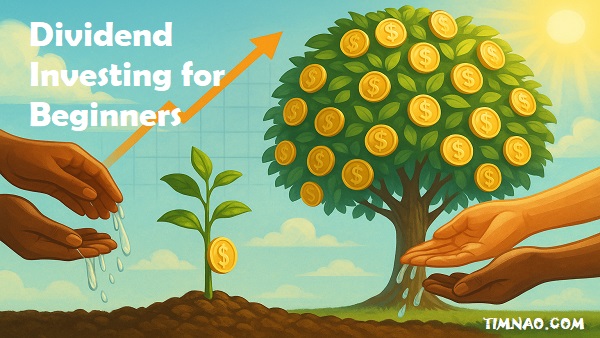


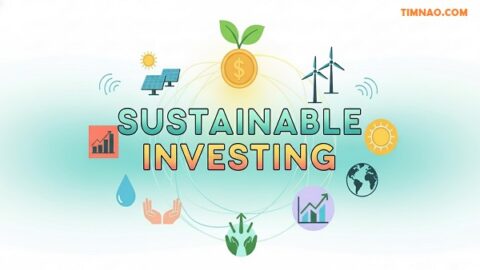


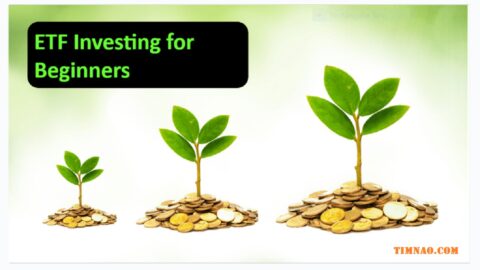
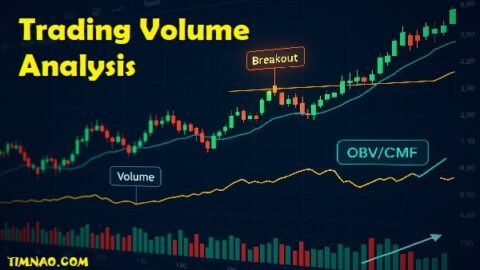
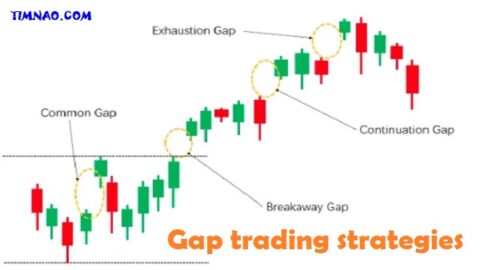
This is really interesting, You’re a very skilled blogger. I’ve joined your feed and look forward to seeking more of your magnificent post. Also, I’ve shared your site in my social networks!
Thanks so much!